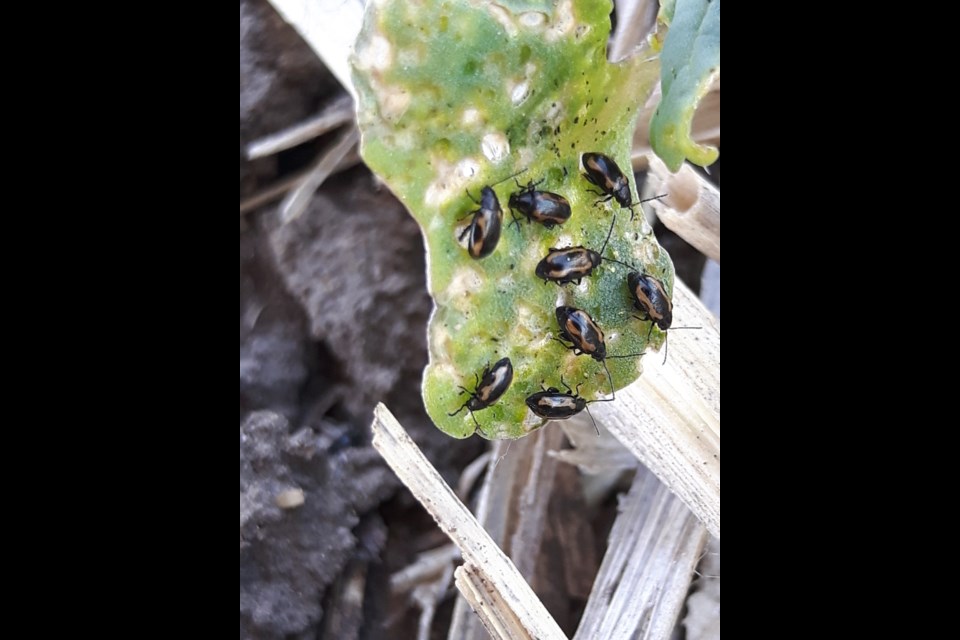CANOLA COUNCIL OF CANADA — Flea beetles can do a lot of damage in a short time. To avoid beetle shock, growers and agronomists across the Prairies will want to scout as soon as seedlings emerge, and check often – especially in crops advancing slowly.
Seed treatments usually provide effective protection as long as canola reaches the three- to four-leaf stage in three to four weeks. Slow-growing crops under intense flea beetle pressure will likely require foliar insecticide. In 2021, dry conditions were ideal for flea beetles (especially warm and dry). Unfortunately, these conditions also slowed the crop – leaving small canola plants vulnerable for longer. The 2021 experience will have many canola growers on high alert for 2022.
The spray, or action, threshold for flea beetles is when average leaf area loss exceeds 25 per cent across the field. With a slow-growing crop and plant stands below five to eight plants per square foot, a lower action threshold may be appropriate.
To assess leaf area loss, scout for damage in a few spots in each field, checking 10 plants in each spot. Flea beetles tend to prefer fresh new leaves. If cotyledons are chewed up but newest leaves show very little feeding, then plants may be outgrowing the threat or seed treatments may be having an effect (or both). If the first true leaves are not present, flea beetles may be nipping them off at the growing point. Also check for stem damage, especially in cool or windy weather. Plants with extensive stem feeding could be assessed at 100 per cent leaf area loss.
Scout daily in areas approaching the action threshold. With a day or two of warm, dry conditions, damage can escalate well beyond the threshold.
Spraying is likely required if flea beetle damage exceeds the threshold, flea beetles are still feeding and the crop has not reached the four-leaf stage.
Tips to improve spray results
Use pesticides registered for flea beetles in canola. Refer to product labels for proper use instructions.
Consider the weather. Insecticide will be effective on cooler days as long as the flea beetles are active. Malathion is the only product that requires a minimum temperature of 18-20°C. Other product labels say to apply when flea beetles are active, but to avoid the warmest parts of the day. Some pyrethroid labels (Decis, for example) say they should not be applied when temperatures are above 25°C. However, if conditions are cool AND wet, don’t bother spraying anything. Flea beetles don’t like rain, and will take cover in the soil and leaf litter. Product labels also say not to spray if rain is likely within one hour.
Use nozzles that provide good coverage. Low-drift nozzles are well-suited for weed control but not flea beetle control. A dedicated sprayer pass with nozzles that produce smaller droplets will provide the coverage needed for improved flea beetle results.
For more on flea beetle lifecycles and management, please see the flea beetles chapter at CanolaEncyclopedia.ca. This article is based on two more detailed Canola Watch Fundamentals articles called “How to assess leaf area loss from flea beetles” and “The flea beetle spray decision: 8 steps”. Find them at canolawatch.org/fundamentals. While there, please sign up to receive our timely Canola Watch agronomy emails.
– Keith Gabert is an agronomy specialist with the Canola Council of Canada. Email [email protected].
Direct links to the two Canola Watch Fundamentals articles**
https://www.canolacouncil.org/canola-watch/fundamentals/the-flea-beetle-spray-decision-8-steps/

